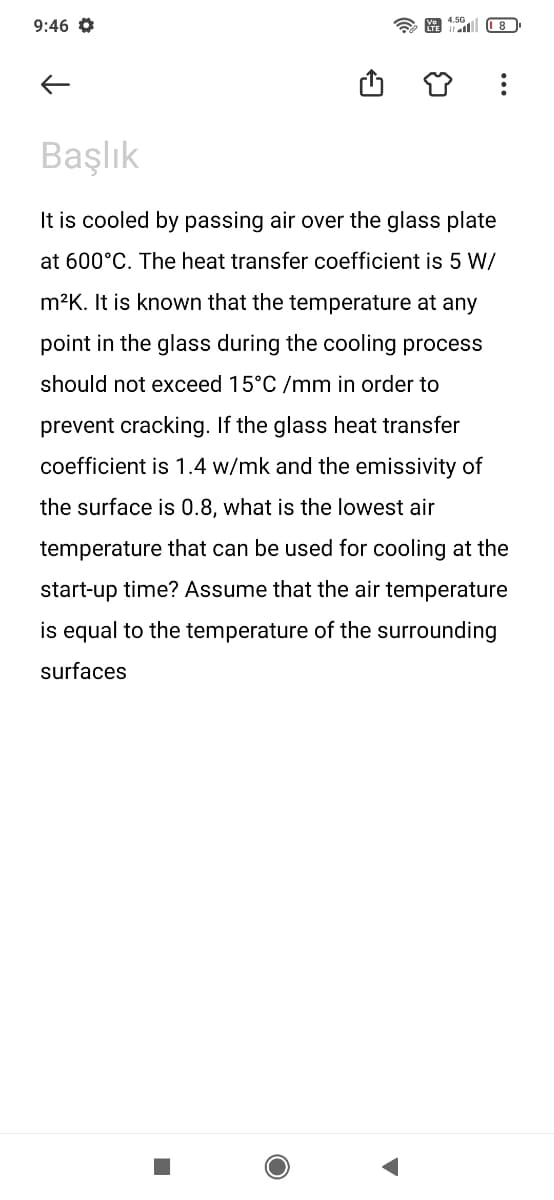It is cooled by passing air over the glass plate at 600°C. The heat transfer coefficient is 5 W/ m²K. It is known that the temperature at any point in the glass during the cooling process should not exceed 15°C /mm in order to prevent cracking. If the glass heat transfer coefficient is 1.4 w/mk and the emissivity of the surface is 0.8, what is the lowest air temperature that can be used for cooling at the start-up time? Assume that the air temperature is equal to the temperature of the surrounding surfaces
It is cooled by passing air over the glass plate at 600°C. The heat transfer coefficient is 5 W/ m²K. It is known that the temperature at any point in the glass during the cooling process should not exceed 15°C /mm in order to prevent cracking. If the glass heat transfer coefficient is 1.4 w/mk and the emissivity of the surface is 0.8, what is the lowest air temperature that can be used for cooling at the start-up time? Assume that the air temperature is equal to the temperature of the surrounding surfaces
Principles of Heat Transfer (Activate Learning with these NEW titles from Engineering!)
8th Edition
ISBN:9781305387102
Author:Kreith, Frank; Manglik, Raj M.
Publisher:Kreith, Frank; Manglik, Raj M.
Chapter8: Natural Convection
Section: Chapter Questions
Problem 8.32P
Related questions
Question

Transcribed Image Text:9:46
Başlık
It is cooled by passing air over the glass plate
at 600°C. The heat transfer coefficient is 5 W/
m²K. It is known that the temperature at any
point in the glass during the cooling process
should not exceed 15°C /mm in order to
prevent cracking. If the glass heat transfer
coefficient is 1.4 w/mk and the emissivity of
the surface is 0.8, what is the lowest air
temperature that can be used for cooling at the
start-up time? Assume that the air temperature
is equal to the temperature of the surrounding
surfaces
■
Expert Solution
This question has been solved!
Explore an expertly crafted, step-by-step solution for a thorough understanding of key concepts.
Step by step
Solved in 2 steps

Knowledge Booster
Learn more about
Need a deep-dive on the concept behind this application? Look no further. Learn more about this topic, mechanical-engineering and related others by exploring similar questions and additional content below.Recommended textbooks for you

Principles of Heat Transfer (Activate Learning wi…
Mechanical Engineering
ISBN:
9781305387102
Author:
Kreith, Frank; Manglik, Raj M.
Publisher:
Cengage Learning

Principles of Heat Transfer (Activate Learning wi…
Mechanical Engineering
ISBN:
9781305387102
Author:
Kreith, Frank; Manglik, Raj M.
Publisher:
Cengage Learning